Continued from page 1
Maturing BIM
Vectorworks has a legacy of being one of the top CAD competitors in the global market, competing head-to-head with AutoCAD and Microstation, but beating both programs decisively in the department of graphics presentation capabilities. Often thought of fondly as “if Adobe ever made a CAD program,” Vectorworks customers in architecture, as a whole, have accomplished so much with the standout graphics possibilities that many customers were slower to move to BIM. However, the Maryland-based company has been on a rapid tear with its BIM functionality for the greater part of the past decade. A lot of that movement has been driven by its European customers in countries like the UK, Germany, and Switzerland.
We have streamlined the section viewport by pushing the computational workload that generates the update into a thread that runs in the background, so you can keep working while that updating is happening.
At times Vectorworks has led its BIM rivals in critical areas like IFC standards adoption, Revit import, chip transitions, or the use of multicore processors for various background processes. In the latest version, we again find Vectorworks putting multithreading programming techniques and caching optimization to good use.
Dr. Biplab Sarkar explains: “We have streamlined the section viewport by pushing the computational workload that generates the update into a thread that runs in the background, so you can keep working while that updating is happening.” The results are up to 6 times faster performances when working in section viewports. Moreover, the graphics VGM (Vectorworks Graphics Module) technologies, which tap the power of bare metal graphics APIs (no more OpenGL), benefit both Windows and Mac. And the caching processes use up to 80 percent less memory, which will help big BIM customers handle massive BIM models better.
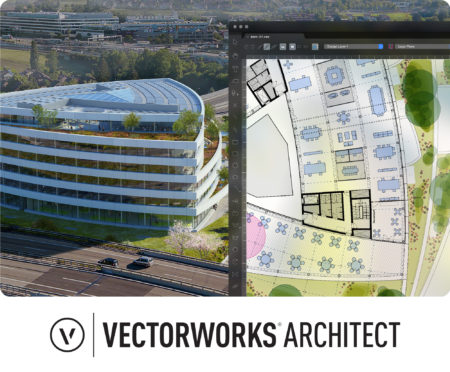
Known within the industry as having graphics capabilities befitting the label “Adobe-like,” Vectorworks doesn’t shed any less interest in its industry-leading 2D graphical capabilities as it scales to BIM industry leadership. It was the first BIM to support Apple Silicon computers, and it did that in its previous release.
Another speed-up is in the IFC import process. “If you brought in IFC files from Revit or other software like dRofus, we used to fail sometimes,” says Dr. Sarkar. “We didn’t have any feedback of what was going wrong. So now we have created a system that prevents that from happening, and the import process is dramatically faster.”
Vectorworks Architect 2023 now features a new BCF Manager inside a web palette. Previously, BCF support was file-based, but that didn’t help customers much when using cloud-based BIM management systems. “So now we are using the BCF Rest API,” adds Dr. Sarkar. “We can connect those BIM databases with a bi-directional data exchange in real-time.”
With the new Vectorworks Architect 2023, you can manage issues coming directly from a service like BIMCollab, and navigate to the viewpoint of an issue and update it. And the system works in both directions. Vectorworks Architect 2023 also supports the latest BCF 3.0 standard. On the programming side, the BCF Manager web palette is tapping Chromium technology, the technology behind the Chrome web browser.
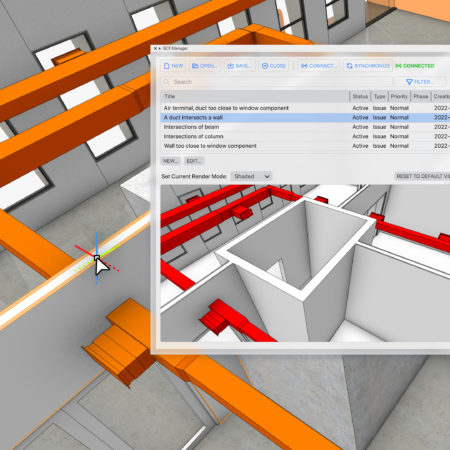
The new web palette-based BCF Manager brings Vectorworks Architect up to the latest BCF 3.0 industry standard and can connect to cloud-based BIM management tools in real-time.
Finally, BIM for landscape design professionals continues to advance with Vectorworks Landmark. The continued database improvements in Vectorworks, which made a massive leap in the 2022 release, continue to generate powerful new features useful for both architects and landscape architects. Both professionals can tap robust data reporting features.
The new Site Modifier improvements in Vectorworks Landmark 2023 make crafting 3D site models easier, particularly with creating vehicular and pedestrian pathways, drainage control, and better contour editing.
More Time Savers
In just working through the writing of this article, it is apparent the 2023 release of Vectorworks is quite massive in terms of significant new features. Another central speed-up feature is the new Graphics Legends technology.
The new technology is innovative due to its flexibility. “The Graphics Legend technology has the power to be as global as you like,” says Johnson, “so you can target window and door schedules, attributes and materials schedules, or any kind of data behind objects; there is a lot of variety in what it can do.”
Graphic Legends is different than the worksheet images technology that arrived in recent releases. “In many countries, especially Japan and the US, it is necessary to provide a sheet with views of all the windows and doors,” adds Dr. Sarkar, “and this automatically does that for you.”
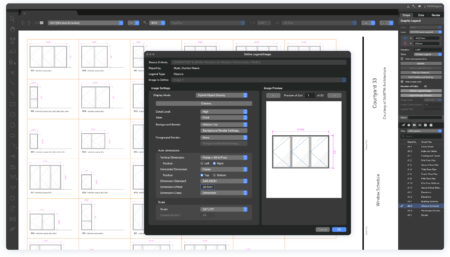
The new Graphics Legends technology is far-reaching and is just beginning its impact on the software system. An immediate use for this technology is for graphic schedules of particular items in the BIM model, like doors, windows, and other objects.
Graphics Legends is unique because each cell has auto-dimensioning capabilities and supports bespoke annotation layer capabilities. This is different than Vectorworks Worksheets.
We would be remiss if we failed to mention one of Vectorworks 2023’s standout new features—the new Shaded Rendering options support. Recall that Vectorworks is no longer OpenGL based. So the standard type of OpenGL shaded view technology in a program like SketchUp has been supplanted by what is possible in new graphics APIs like Apple’s Metal and Microsoft DirectX12.
The new options include environmental lighting, environmental reflections, and object reflections. Vectorworks also can render 3D scenes with an unlimited number of lights to illuminate a scene. A new option setting allows the program to limit light sources to eight, matching the rendering look of previous software versions. And the new Redshift Render technology will use hardware acceleration techniques on your CPU if your GPU doesn’t meet core support requirements.
Talking Markets and Strategy
Dr. Sarkar and Johnson both emphasized how vital the new rendering technologies are for interior design professionals. It begged the question of whether Vectorworks might craft another vertical called Vectorworks Interiors, highlighting BIM at the center of the interior design profession.
“We are looking into it,” suggested Dr. Sarkar. “We have not made a decision yet.” Sarkar noted that the Nemetschek Group, its parent company, has asked the company about expanding into other verticals, and interiors is one possible area. Another one is audio and visual design (AV). But such talk about different verticals doesn’t diminish the company’s core focus on the architecture market, where it continues expanding its user base.
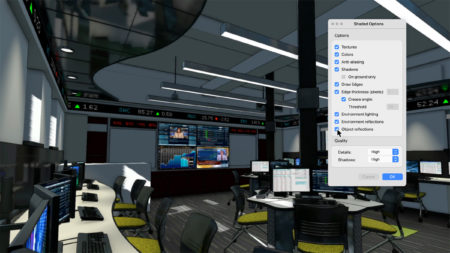
The new Shaded Rendering mode is vastly more realistic and flexible than the older OpenGL rendered modes of previous versions. Unlimited different light sources, plus combination settings for environmental lighting, environmental reflections, and object reflections, transforms working visuals for BIM and other users.
Why can the company continue to deliver significant updates for architects, landscape architects, and the entertainment industry while considering more vertical markets? It’s a fair question.
“Our technologies and SDKs are layered,” says Dr. Sarkar, “so it is ideal for other verticals.” The company has been brilliant about what foundational technologies it has adopted (think Parasolid) versus which ones it has developed in-house (e.g., Vectorworks Graphics Module or VGM). Their VGM is “modular,” which simplified decisions about leaving OpenGL behind for a multiplatform future that embraced DirectX and Metal and could also feature in Vulkan. It is even thinking about using the IFC technologies from the Open Design Alliance.
“We see some good things they are doing there, and we have a plan,” says Dr. Sarkar. “Once they catch up to our level, we will likely transition because the maintenance is all in their court.” That frees up resources, so the company can develop unique technologies that stand apart from the competition.
Closing Thoughts
The sheer fact that Vectorworks was the first BIM to support Apple’s ARM architecture M-series chips cannot be understated. And they did that last year; with that in the rearview mirror, Dr. Sarkar and Steve Johnson’s developer teams are pushing ahead on multiple vertical fronts while providing deep updates.

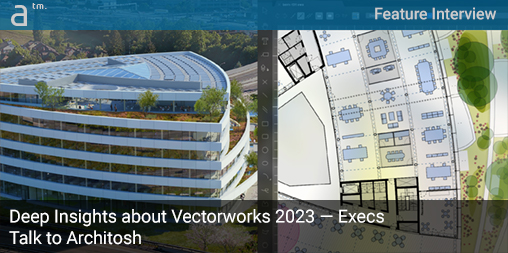


Reader Comments
Comments for this story are closed